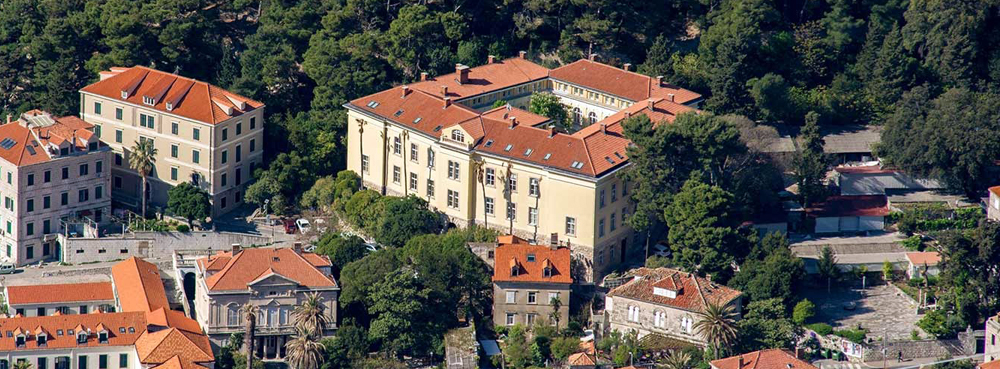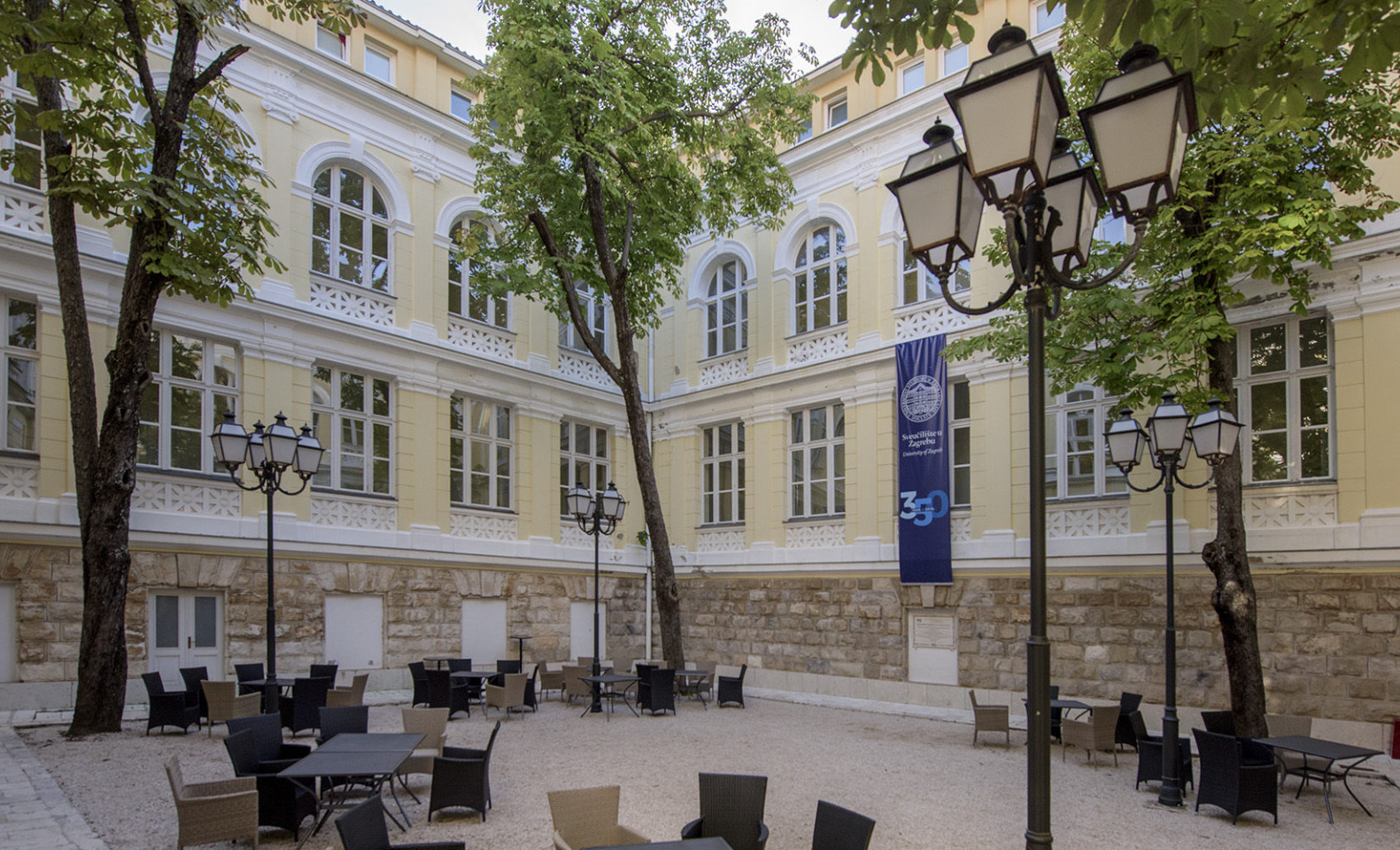A moderate registration fee in the amount of 260 Euro (€) will be charged to each delegate attending the workshop. The registration fee will include: welcome reception, lunches during conference days, coffee breaks, workshop dinner, a city tour and the workshop materials with the Book of Abstracts on USB memory. The fee for an accompanying person amounts 150 Euro (€) and it will include: welcome reception, lunches during conference days, workshop dinner and a city tour. The given prices include VAT (25%).
For the participants who submit an abstract and pay the registration fee, and cannot organize their trip to Dubrovnik due to COVID-19 related travel restrictions, online participation via the Zoom platform will be enabled to allow them to attend the workshop and present their work. Please note that the registration fee for the participants who will switch to online participation is the same as for onsite participants.
Please, do your best to be with us in Dubrovnik attending the workshop in person!
Abstract Submission:
28 February 2022
Registration:
31 March 2022
The 6th IJFatigue & FFEMS joint workshop will take place at the Centre for Advanced Academic Studies (CAAS) of the University of Zagreb in the city of Dubrovnik. The magnificent old building of the CAAS is situated in the centre of Dubrovnik on the Croatian Adriatic Coast, in the vicinity of the most prominent historical places of the Old Town.

For your stay in Dubrovnik during the workshop we would recommend to book accommodation available at the workshop venue, in the CAAS Residence. Convenient accommodation with breakfast is available for conference delegates in 21 single, 13 double and 4 three-bed rooms (all with bathroom, air conditioning, phone and Internet connection) located on the third floor of the CAAS building. In addition, seven small apartments are located on the second floor of the same building. Rooms are available from April 9 – 16, 2022. CAAS Residence Price list can be found at this link. To book rooms in the CAAS Residence please contact us via email: cctf@fsb.hr.

The address of the Conference Venue:
CENTRE FOR ADVANCED ACADEMIC STUDIES
The city is easily accessible by sea, air (Dubrovnik Airport in Ćilipi is 20 km from the city center) or land. Many European cities are well connected with Dubrovnik – by regular or charter flights.
Dubrovnik Airport info at www.airport-dubrovnik.hr
You can easily take a taxi available during the operating hours of the airport directly to the hotel (€ 35,00).
Bus transportation is easy. Take a regular bus service from the airport to the city terminal in Dubrovnik (€ 5,00). Take a taxi to the hotel (€ 10,00) or a local city bus (€ 1,40).
Extended abstracts will be collected in the Book of Abstracts with an ISBN number that will be distributed to all participants at the beginning of the Workshop. The template for One-page Abstract for the 6th IJFatigue and FFEMS Joint Workshop can be downloaded from this link. The Abstract must be in accordance with the given template. In order to submit your Extended Abstract contribution please access Conference Management System. First step is creation of a user account in the Conference Management System, after which you may proceed to the submission.
Special issues of the International Journal of Fatigue and Fatigue & Fracture of Engineering Materials & Structures are planned to contain selected papers which will have been extended to take account of the workshop discussions.
The Joint Special Issues that were published after the previous Workshops can directly be accessed via the website of the two journals.
Željko Božić, University of Zagreb, Croatia
M. Neil James, University of Plymouth, UK
Youshi Hong, Chinese Academy of Sciences, China
Luca Susmel, University of Sheffield, UK
Forni di Sopra, Italy, 7-9 March 2011
Malaga, Spain, 15-17 April 2013
Urbino, Italy, 20-22 April 2015
Bonifacio, France, 10-12 April 2017
Heidelberg, Germany, 8-10 April 2019
This Workshop is intended to promote discussion, collaboration and the free exchange of ideas in an area of considerable interest to the fields of fracture under static, dynamic or cyclic loading; namely the characterisation of crack tip fields using mechanics and microstructural parameters and, in particular, to consider the issue of multiparameter and cross-discipline characterisation.
The Workshop will be focussed around invited lectures and discussions with the aim of capturing key points for a final discussion session. Participants will be asked to come prepared to give a 15 minute presentation (follow by a 10 minute discussion) on a topic of relevance to the Workshop theme. Independent Special Issues of Fatigue & Fracture of Engineering Materials and Structures and International Journal of Fatigue are planned from this conference with the selected paper being extended and reviewed for these journals in the light of the learning from the Workshop itself. It is anticipated that these special issues will form an archival contribution to future work in this important area.
This workshop series arose from a discussion in 2009 between the Editors of FFEMS (John Yates and Youshi Hong) and IJ Fatigue (Neil James), as they had observed in their journal work that an increasing number of authors and research groups were working on the topic of characterising notch/crack tip fields and the associated damage mechanisms. These aspects are under active investigation in situations involving static, dynamic and cyclic loading. This view has since been confirmed by the Editor of Theoretical & Applied Fracture Mechanics, Luca Susmel, and obtaining a better understanding of all relevant issues forms the basic rationale for this ongoing workshop series.
Whilst a single-parameter characterisation of the crack/notch tip fields using fracture mechanics parameters like K, J or CTOD has been extremely powerful in advancing predictive technologies for critical or sub-critical crack growth, it has also become clear that such approaches have limitations. Over the last 30 years, notable areas of activity related to such difficulties include, amongst others: short cracks, plasticity-induced closure, variable amplitude fatigue, multiaxial static, dynamic, and fatigue loading, and notch effects.
Further significant progress is likely to require combined input from analytical and numerical models and the use of sophisticated full-field experimental techniques. Alongside this, bridging the gap from micro-scale through meso-scale to structural dimensions requires a focus on microstructure and damage mechanics, as well as applied mechanics.
Attention has been directed towards developing approaches which synergetically combine several of these aspects into improved design methodologies for modelling cracking processes and residual strength of damaged components.
The organisers of this unique academic workshop believe that the structural integrity community would benefit from an opportunity for invited research scientists and engineers to present, exchange and actively discuss new data and cutting edge ideas/techniques related to characterisation of crack/notch tip fields in an informal, interactive format at a conference venue in an historic and beautiful environment.
University of Zagreb
Faculty of Mechanical Engineering and Naval Architecture
Ivana Lučića 5, 10000 Zagreb, Croatia
Phone: + 385 1 6168536
Mobile: + 385 98 1863915
zeljko.bozic@fsb.hr
Workshop Office
Fax: + 385 1 6156940
cctf@fsb.hr